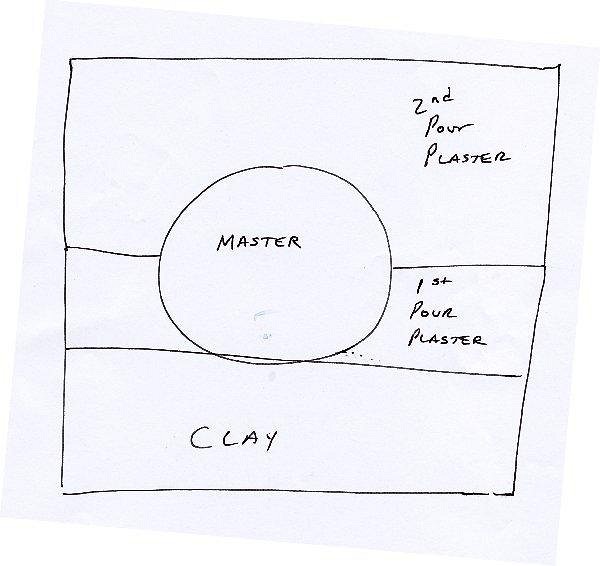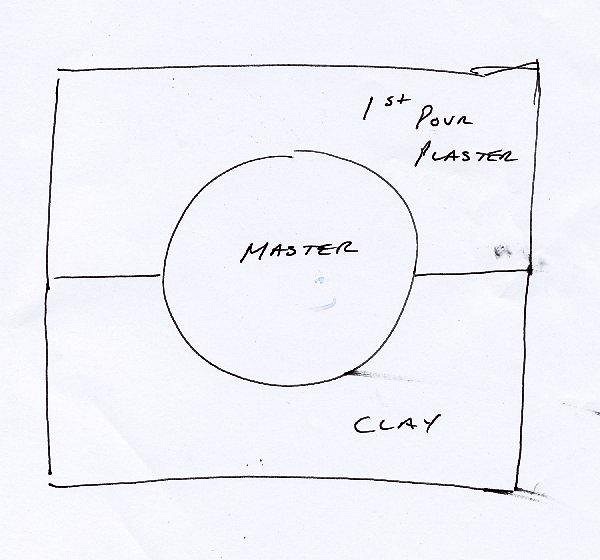Tiki Central / Other Crafts / Maui Tiki Ceramics - by TikiRob
Post #578512 by MadDogMike on Wed, Mar 2, 2011 4:36 PM
|
M
MadDogMike
Posted
posted
on
Wed, Mar 2, 2011 4:36 PM
Here's what it looks like to me, Swizzle can correct me if I'm wrong.
Swizzle, I think this is how most molds are made.
As far as mixing plaster by feel, it's the method I use :D It works fine if you are just making a mold to pull a limited number of casts. If you are doing mass production work, it's better to measure everything to produce the optimal quality mold. |


